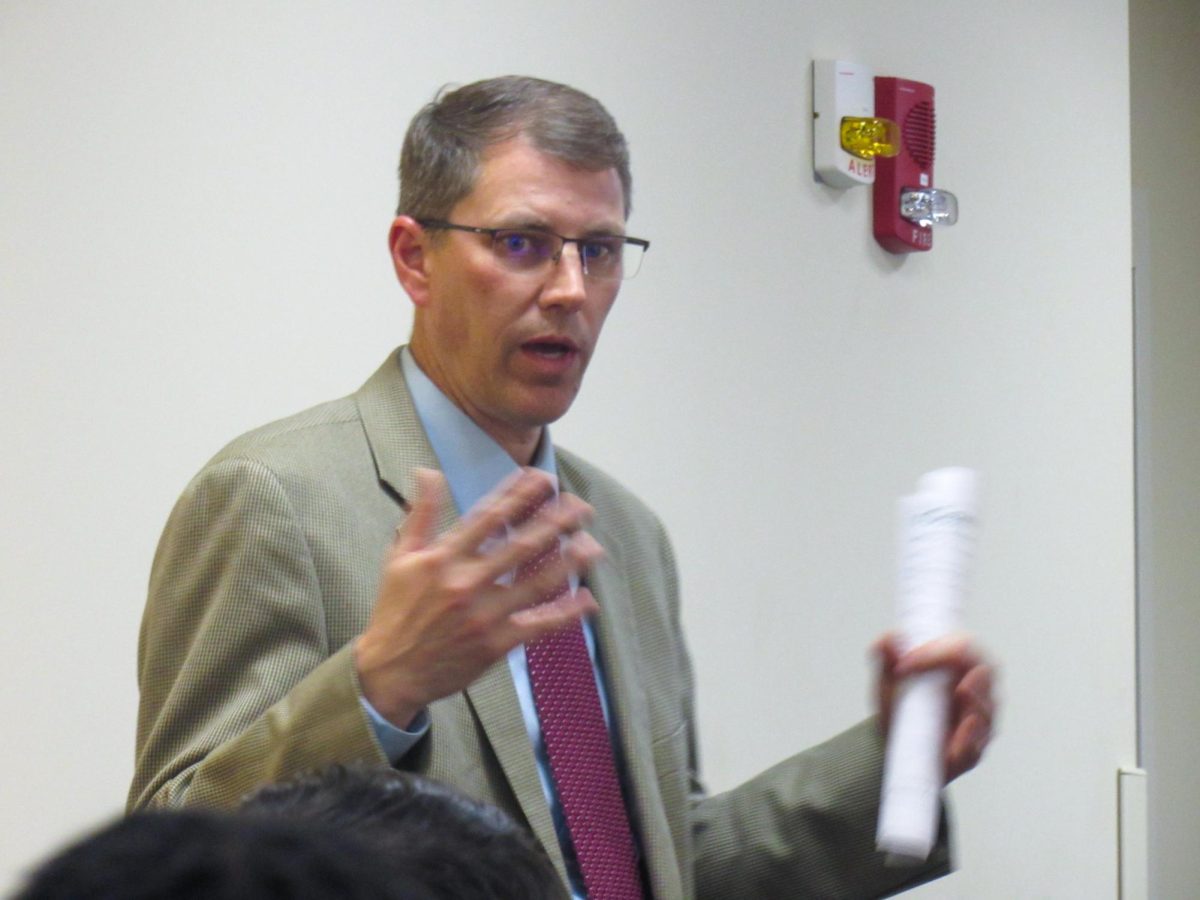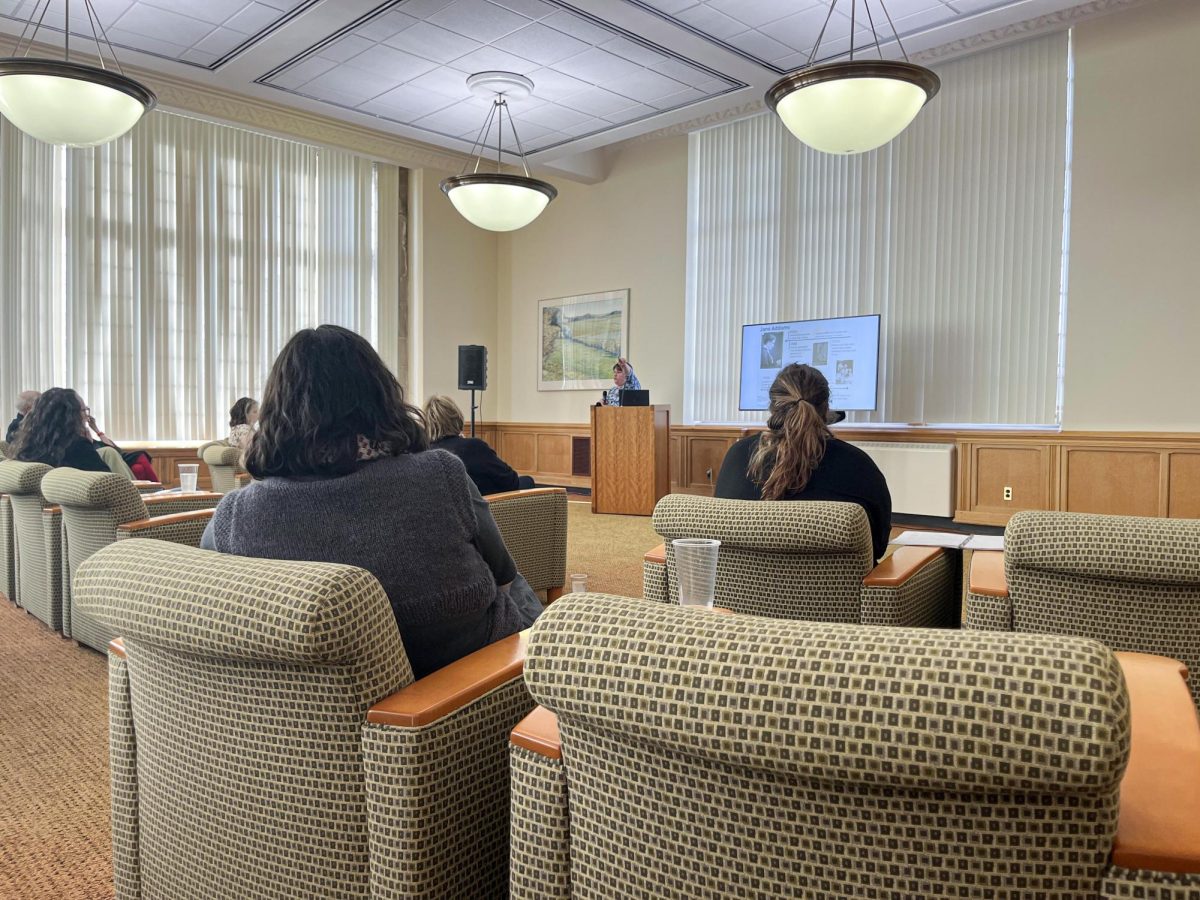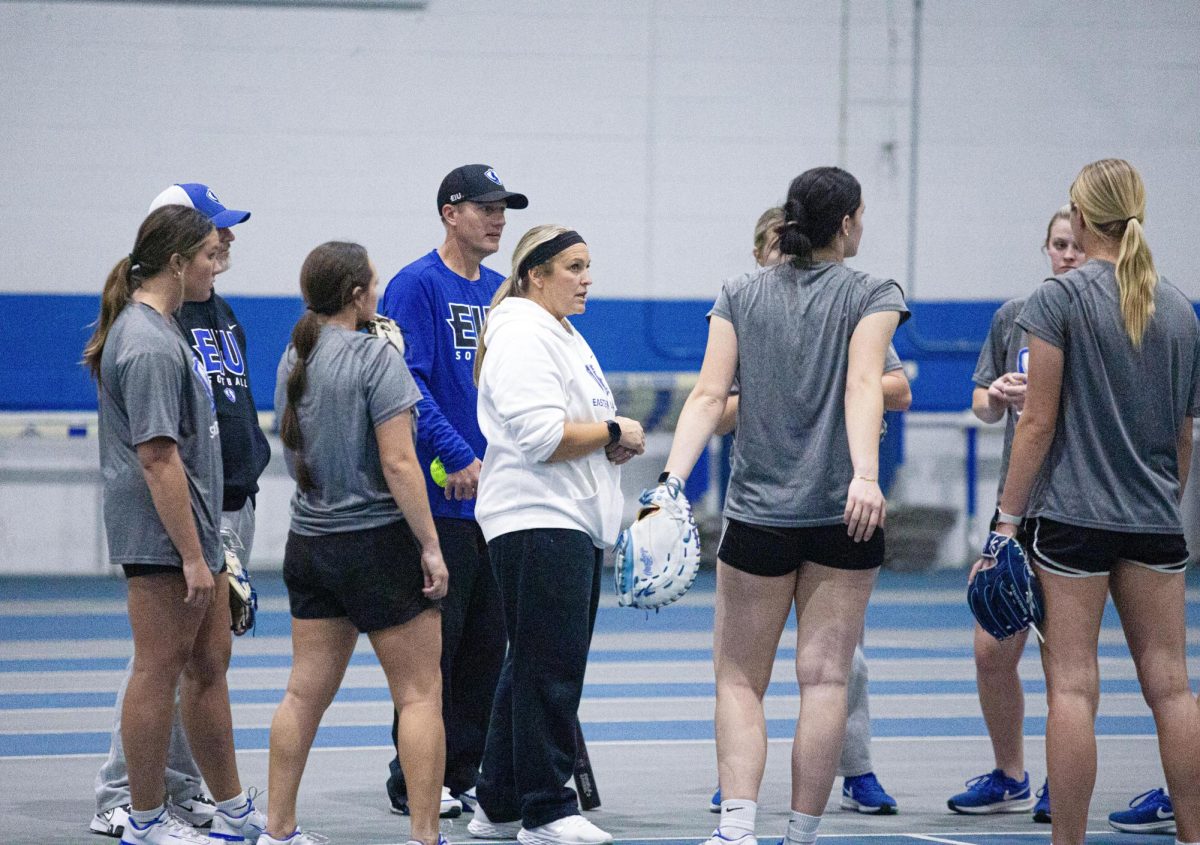State makes teaching test harder
The state is making it more difficult to become a teacher by raising the standards for the proficiency test students must pass to continue, the chairman of the department of secondary education and foundations said.
Stephen Lucas, the chairman of the department of secondary education and foundations, said before the change with the passing score for the test, 90 to 95 percent of those who took the tests passed.
“It was very, very easy to pass, very basic, almost early high school terms of levels of expectations for your performance,” Lucas said. “A couple of years ago, the state raised the passing score you had to get for that, and statewide, we saw the pass rate go from 90 to 95 percent to 30 to 35 percent.”
He said this increase has caused less people to show interest in becoming a teacher, and those who do may not make the cut.
“The numbers have changed in three years to where we are about one-half or one-third the size we used to be just three years ago because there are fewer students passing the basic skills test,” Lucas said.
Lucas said in order to be a high school teacher, they have to major in the field they want to teach before they start the teaching track.
“You know high school teachers are going to teach specific subjects so unlike elementary teachers, which teach everything,” Lucas said.
He said they will focus on one core area, like English, math, history or art, but elementary teachers teach everything, so the process is a little different.
After deciding between elementary and secondary education, the student has to go to an admission to teacher education meeting, where they learn all the expectations.
“There is a long check list of about 12 to 15 things that you have to do at Eastern to eventually become a teacher,” Lucas said.
The first class secondary education students take is SED 2000: Inquiry Into Teaching where they learn about the profession and keep them up to date about the current teaching qualifications by the state.
“Every year, it seems like the state comes up with new requirements and changes things, so we try to get everybody the up-to-date information,” Lucas said.
Secondary education students do not typically start focusing on education classes until their junior year, Lucas said.
During this year, the students will get their first experience teaching with their practicum class.
He said one of the major changes in the field is the qualification to get into the practicum class.
“In order to get into that class, you have to pass the test called the ‘Test of Academic Proficiency,’” Lucas said. “That’s been the biggest change we experienced the last couple of years because that was a test, like the Basic Skills Test, in reading, writing and language arts.”
If students pass the test, they get into the class where they learn teaching methods and educational psychology before they go to a local school for six weeks of teaching.
When they are nearing the end, they take a content test that covers the entire subject matter they are going to teach.
“It proves they know the stuff they are going to teach before they go out to student teach,” Lucas said. “When they pass that, they are eligible to then go student teach, and their final semester they are full-time student teaching to whatever school they are assigned to.”
Lucas said to graduate and get a teaching, license they have to pass a test called “Assessment of Professional Teaching,” which covers teaching methods.
After they pass that test and student teaching, Eastern recommends them to the state and they go into the job market.
Lucas said the qualifications for teachers have changed drastically from the time he went to school.
He said part of the reason is the advent of “No Child Left Behind.”
“Back in the day, when I completed my teacher education program, all we had to do was complete the course work and the program at the university,” Lucas said. “There wasn’t any testing that we had to do in order to be a teacher.”
Samantha McDaniel can be reached at 581-2812 or slmcdaniel@eiu.edu.









![[Thumbnail Edition] Eastern Illinois University baseball's hitting coach and recruiting coordinator Mike Pugliese urges players on the team to increase their effort after a slow start to its pregame routine at the team's first intrasquad scrimmage of the season at O'Brien Field on Jan. 31, 2025.](https://www.dailyeasternnews.com/wp-content/uploads/2025/03/BB_02_O-1-e1741909628540-1200x702.jpg)
![[Thumbnail Edition] Senior tennis player Luisa Renovales Salazar hits the tennis ball with her racket at the Darling Courts at the Eastern Illinois University campus in Charleston, ILL.](https://www.dailyeasternnews.com/wp-content/uploads/2025/03/Tennis_01_O-1-e1741807434552-1200x670.jpg)
![[Thumbnail Edition] Senior right-handed pitcher Tyler Conklin pitching in the Eastern Illinois University baseball team's intrasquad scrimmage at O'Brien Field in Charleston, Illinois on Jan. 31.](https://www.dailyeasternnews.com/wp-content/uploads/2025/03/TC_01_O-e1741567955534-1200x669.jpg)





![[Thumbnail Edition] Senior, forward Macy McGlone finds an open teammate to pass the ball too during the game against the Tennessee State Tigers 69-49, in Groniger Arena on the Eastern Illinois University campus, Charleston Ill.](https://www.dailyeasternnews.com/wp-content/uploads/2025/03/WBB_02_O-1-e1741228987440-1200x692.jpg)


















![E[Thumbnail Edition] Eastern Illinois softball freshman utility player Abbi Hatton deciding to throw the softball to home plate in a fielding drill during softball practice at the field house in Groniger arena on Tuesday Feb. 11.](https://www.dailyeasternnews.com/wp-content/uploads/2025/03/SB_03_O-e1741208880750-1-e1741209739187-1200x815.jpg)















![The Weeklings lead guitarist John Merjave [Left] and guitarist Bob Burger [Right] perform "I Am the Walrus" at The Weeklings Beatles Bash concert in the Dvorak Concert Hall on Saturday.](https://www.dailyeasternnews.com/wp-content/uploads/2025/03/WL_01_O-1200x900.jpg)
![The team listens as its captain Patience Cox [Number 25] lectures to them about what's appropriate to talk about through practice during "The Wolves" on Thursday, March 6, in the Black Box Theatre in the Doudna Fine Arts Center in Charleston, Ill.](https://www.dailyeasternnews.com/wp-content/uploads/2025/03/WolvesPre-12-1200x800.jpg)
















